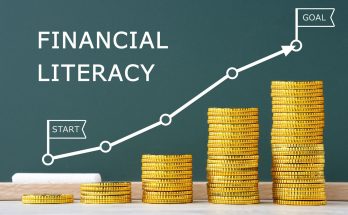Introduction
Taking control of your finances can feel overwhelming. With bills to pay, savings goals to meet, and investments to track, it’s easy for things to spiral out of hand. But there’s a powerful tool at your disposal: the personal financial audit. This simple yet effective process allows you to take a closer look at your financial situation and identify areas that need improvement.
Imagine gaining clarity on where your money goes each month or discovering hidden opportunities for savings and growth. A personal financial audit can do just that! By breaking down your income, expenses, debts, and investments, you’ll be better equipped to make informed decisions about your future. Ready to dive in? Let’s explore how you can conduct an insightful personal financial audit step by step.
Why Conduct a Personal Financial Audit?
Conducting a personal financial audit is essential for anyone looking to gain control over their finances. It provides clarity and insight into your current financial situation.
By evaluating where your money goes each month, you can identify spending habits that might be draining your resources. This awareness empowers you to make informed decisions.
Additionally, a thorough audit helps uncover hidden fees or subscriptions that you may have forgotten about. These small expenses can add up significantly over time.
Understanding your income streams versus your expenditures enables better planning for the future. You’ll feel more confident knowing exactly what’s happening with your money.
Regular audits encourage accountability in managing personal finances. They pave the way for smarter budgeting and saving strategies tailored to meet specific goals.
Step 1: Gather All Financial Documents
The first step in conducting a personal financial audit is to gather all your financial documents. This might feel like a daunting task, but it sets the foundation for everything that follows.
Start by collecting your bank statements, credit card bills, and pay stubs. These documents provide insight into how money flows in and out of your life.
Don’t forget about tax returns from the past few years. They can reveal trends or discrepancies worth investigating further.
Also include any loan statements—mortgages, student loans, or personal loans—in this collection. Understanding these obligations helps you paint a clearer picture of your overall financial health.
Keep digital copies organized as well; use folders on your computer or cloud storage apps to make accessing them easier later on. Taking this initial step empowers you with knowledge as you dive deeper into analyzing where you stand financially.
Step 2: Analyze Your Income and Expenses
Now that you’ve gathered your documents, it’s time to dive into the numbers. Start by listing all sources of income. Include your salary, side gigs, and any passive income streams. This will give you a clear picture of what comes in each month.
Next, turn your attention to expenses. Identify fixed costs like rent or mortgage payments and variable expenses such as groceries and entertainment. Don’t forget those sneaky subscriptions that can add up over time.
Once everything is laid out, compare your total income against your total expenses. Are you spending more than you’re earning? If so, pinpoint areas where adjustments can be made.
This analysis isn’t just about balancing books; it’s about understanding your financial habits. Recognizing where money flows gives insight into patterns that might need changing for better personal finance management down the line.
Step 3: Evaluate Your Debt and Credit Score
Evaluating your debt and credit score is crucial in a personal financial audit. Start by listing all debts, including loans, credit cards, and any other obligations. Understanding how much you owe gives you clarity.
Next, dive into your credit score. Obtain a free report from major agencies like Experian or Equifax. This number reflects how lenders perceive your risk level. A higher score means better borrowing terms.
Check for discrepancies on your report that could negatively impact your score. If you find errors, dispute them immediately to improve your standing.
Consider the debt-to-income ratio too; it shows how much of your income goes toward debt repayment each month. A lower percentage indicates better financial health and enhances future borrowing opportunities.
Paying down high-interest debts first can be a smart strategy as well. Focus on these before tackling others for effective management of finances.
Step 4: Review Your Investments and Savings
Reviewing your investments and savings is crucial in a personal financial audit. Start by listing all your accounts, including retirement funds, stocks, bonds, and any other assets.
Next, assess the performance of each investment. Are they meeting your expectations? Consider factors like risk tolerance and market conditions. If certain investments are underperforming consistently, it might be time to evaluate whether to hold or sell them.
Don’t forget about your savings. Check if you have an emergency fund that covers three to six months of essential expenses. This safety net can provide peace of mind during unexpected situations.
Also, analyze the interest rates on your savings accounts versus inflation rates. It’s essential to ensure that your money grows over time instead of losing value.
Reflect on how these aspects align with your overall financial goals. Adjustments may be necessary as life circumstances change or as you approach new milestones.
Step 5: Set Goals and Create a Budget
Setting financial goals is a powerful way to gain control over your personal finances. Think about what you want to achieve in the short and long term. Whether it’s saving for a vacation, buying a home, or planning for retirement, having clear objectives gives your budget purpose.
Once you’ve identified your goals, it’s time to create a realistic budget that aligns with them. Break down your income and expenses into categories like essentials, savings, fun spending, and debt repayment. This provides clarity on where your money flows.
Adjusting these categories allows you to prioritize funding for your goals while managing daily needs. Keep it flexible; life can throw unexpected events at any moment. Regularly reviewing this budget ensures you’re on track towards achieving those aspirations without feeling overwhelmed by constraints.
Conclusion
Conducting a personal financial audit can be an empowering experience. It allows you to take control of your finances and gain clarity on your current situation. By following the steps outlined, you’ll create a clearer picture of where you stand financially.
Gathering all necessary documents sets a solid foundation for your audit. Analyzing income and expenses helps identify spending patterns and areas for improvement. Evaluating debt alongside credit scores offers insight into financial health, while reviewing investments ensures you’re on track toward long-term goals.
Setting clear goals and crafting a budget are essential in moving forward confidently. This approach not only organizes your finances but also lays out a roadmap to achieving greater financial stability.
Taking these steps will help you become more informed about your personal finances, enabling smarter decisions that align with your aspirations. Embrace this opportunity to enhance your financial well-being—it’s time to put yourself in charge!



